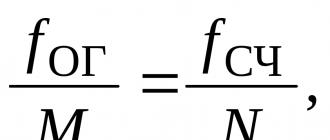A simple and reliable design of an automatic computer fan (cooler) speed controller.
This design is a variant of the previous one. The circuit has been slightly changed and the board has been redesigned so that the device can simply be plugged into the “FAN” connector of the computer motherboard.
The scheme is this:

A 10K thermistor is used as the sensor. Such put, for example, on electronic automobile thermometers. The characteristic should be such that its resistance decreases with increasing temperature.
At low temperatures, the fan is powered through resistor R8. If your fan speed is too low when using the 180 ohm rating, it can be reduced to 100.
Resistor R3 (470 ohm) sets the threshold (temperature level) at which the controller starts to add fan speed. It is better to make the adjustment this way - heat the sensor to a temperature at which an increase in speed begins to be required, and use a potentiometer to find the point at which the LED begins to barely shine. This will be the adjustment threshold.
Using the potentiometer R4, the “adjustment slope” is set. That is, it is determined at what temperature the fan speed reaches its maximum value.
The printed circuit board of the device is as follows:

And here is the assembled device. The layout of the board allows you to control the fan speed using the motherboard (for 3-wire fans).

The main problem of fans that cool this or that part of the computer is increased noise level. The basics of electronics and the available materials will help us solve this problem on our own. This article provides a connection diagram for adjusting the fan speed and photos of what a homemade speed controller looks like.
It should be noted that the number of revolutions primarily depends on the level of voltage applied to it. By reducing the applied voltage level, both noise and RPM are reduced.
Wiring diagram:
 Here are the details we need: one transistor and two resistors.
Here are the details we need: one transistor and two resistors.
As for the transistor, take KT815 or KT817, you can also use more powerful KT819.
The choice of transistor depends on the power of the fan. Mostly simple DC fans with a voltage of 12 volts are used.
Resistors must be taken with the following parameters: the first is constant (1kOhm), and the second variable (from 1kOhm to 5kOhm) to adjust the fan speed.
Having an input voltage (12 Volts), the output voltage can be adjusted by rotating the sliding part of the resistor R2. As a rule, at a voltage of 5 volts or lower, the fan stops making noise.


When using a regulator with a powerful fan, I advise you to install the transistor on a small heat sink.
That's all, now you can assemble a fan speed controller with your own hands, without noisy work for you.
Sincerely, Edgar.
This is my first post, in the following I will talk about how to make video surveillance, a liquid cooling system, automated (programmable) lighting and much more delicious, we will solder, drill and flash chips, but for now let's start with the simplest, but nevertheless , a very effective reception: mounting a variable resistor.
The noise from the cooler depends on the number of revolutions, the shape of the blades, the type of bearings and other things. The higher the number of revolutions, the more efficient the cooling, and the more noise. Not always and not everywhere you need 1600 rpm. and if we lower them, then the temperature will rise by a few degrees, which is not critical, and the noise may disappear altogether!
On modern motherboards, the speed control of coolers that are powered by it is integrated. In BIOS, you can set a "reasonable" cut, which will change the speed of coolers depending on the temperature of the cooled chipset. But there is no such option on old and budget boards, and what about other coolers, for example, a PSU cooler or a case cooler? To do this, you can mount a variable resistor in the power supply circuit of the cooler, such systems are sold, but they cost incredible money, considering that the cost of such a system is about 1.5 - 2 dollars! This system sells for $40:
You can make it yourself, using as a socket - a stub from your system unit (a stub in the basket where DVD / CD drives are inserted), and you will learn about other things from this post.
Because I broke off 1 blade from the cooler on the PSU, I bought a new one with ball bearings, it is much quieter than usual ones:

Now you need to find a wire with power, in the gap of which we mount a resistor. This cooler has 3 wires: black (GND), red (+12V) and yellow (tachometer contact).

We cut red, clean and tin.

Now we need a variable resistor with a resistance of 100 - 300 ohms and power of 2-5 W. My cooler is rated at 0.18A and 1.7W. If the resistor is designed for less power than the power in the circuit, then it will heat up and eventually burn out. As exdeniz suggests, it's perfect for our purposes. PPB-3A 3W 220 Ohm. A variable resistor like mine has 3 pins. I will not go into details, just solder 1 wire to the middle pin and one extreme, and the second to the remaining extreme (You can find out the details with a multimeter / ohmmeter. Thanks guessss_who for the comment).

Now we mount the fan in the case and find a suitable place to mount the resistor.

I decided to put it in like this:

The resistor has a nut for attaching to the plane. Please note that the case is metal and may short the resistor contacts and it will not work, so cut out an insulator gasket from plastic or cardboard. My contacts do not close, fortunately, so there are no gaskets in the photo.
Now the most important thing is the field test.
I turned on the system, opened the PSU case and found the hottest area with a pyrometer (this is an element that looks like a transistor that is cooled by a radiator). Then he closed it, unscrewed the resistor to maximum speed and waited 20-30 minutes ... The element has reached 26.3 °C.

Then I set the resistor to half, No more noise again waited 30 minutes... The element has reached 26.7°C.

Again I lower the speed to a minimum (~ 100 Ohm), wait 30 minutes, I don’t hear any noise from the cooler at all ... The element has reached 28.1°C.

I do not know what kind of element it is and what its operating temperature is, but I think that it will withstand another 5-10 degrees. But given that there was no noise on the “half” of the resistor, then we don’t need anything else! =)
Now you can make such a panel, as I gave at the beginning of the article, and it will cost you a penny.
Thank you.
UPD: Thanks to the gentlemen from the comments for reminding me about watts.
UPD: If you are interested in the topic and you know what a soldering iron is, then you can easily assemble an analog reobas. As fleshy tells us, in the article Analog reobas, this wonderful device is described. Even if you've never soldered a board, you can build a reobas. The article has a lot of text that I don’t understand either, but the main thing is: Composition, Scheme, Mounting ( in this paragraph there are links to all the necessary articles on soldering).
In essence, the fan speed controller deals with changing the voltage that is applied to the device. If we talk about engines, then the above device is responsible for switching the winding. In this case, the frequency of the current can fluctuate significantly.
It is thanks to the fan controllers that electrical appliances are able to serve the owner for many years. This happens by reducing the wear of important components of the unit. Additionally, it is possible to reduce electricity consumption. In turn, at higher speeds, the fan is much quieter.
Thyristor fan controllers
The thyristor fan speed controller (diagram shown below) can only be installed on single-phase equipment. Of the features, a reliable security system can be distinguished. Thanks to it, the fan prevents overheating of important components. As a result, the revolutions can be controlled by changing the current strength.

The power source of the device is a network with a voltage of 220 V. At the same time, the average frequency fluctuates around 55 Hz. The maximum voltage deviation is allowed at 15%. Many models of thyristor regulators are equipped with special sensors. The most common are devices marked "RTS". They can be used at temperatures from -50 to +50 degrees. The fan speed controller is pretty easy to install. At the same time, it has a rotation speed indicator.
Features of frequency regulators
Typically, a variable speed fan speed controller is capable of handling very high voltages. In this case, the rotation speed changes due to a change in the current strength. Most often, this type can be found on various air conditioning systems. In addition, frequency controllers are ideal for devices used for air ventilation. In general, the above devices look quite simple.
Characteristics of frequency regulators
They are powered by a network with a voltage of 220 V. The output power of the fan should be no more than 500 watts. The maximum resistance of the regulator is on average 300 kOhm, and the system control signal can be perceived up to 10 V. The regulator unit itself consumes 3 V power.
The standard set of the device consists of a cable, as well as a screw-type terminal. Fuses in the device are available with a current of at least 3 A. The degree of protection in many models is set to class "IP21". A frequency-controlled fan speed controller can be used at temperatures from -10 to +30 degrees.
Transformer fan controllers
Transformer fan speed controller 12V is used exclusively for powerful single-phase or three-phase motors. Direct control of the speed is carried out in a stepwise manner. In this case, it is possible to establish automatic coordination. Temperature sensors are installed in many models.
Additionally, it is possible to choose transformer fan controllers with humidity indicators. At the same time, their power can be changed using a timer. These devices are attached with screws. The device can be equipped with special clamps for the rigidity of the connection. Terminals are available as input contact. Power cables are included as standard.

The transformer regulator withstands resistance at the level of 400 kOhm. In this case, the control signal is perceived up to 4 V. In addition, the high load of the relay output should be noted. of the device on average fluctuates around 12 V. In general, these devices are rather bulky compared to frequency fan controllers and are more expensive.
Triac types of regulators
The triac fan speed controller is the most complex device of all the types listed above. It is used to control several devices at once. At the same time, the motors on them can be installed direct, as well as alternating current. The actual change in speed is quite smooth.

It is also important to note that the voltage range is very wide. Three-phase models of regulators stand out with particular accuracy. To reduce the operation of the device, a special smoothing capacitor is provided in the mechanism. The installation of the triac regulator may be different. Flush mounting is considered the most common, however, many manufacturers are able to offer mounts for external fixation of the device.
The principle of operation of the triac controller
The processing of absolutely all data is handled by a microprocessor unit. In turn, there is a sensor to transmit a signal to the triac fan speed controller. It is connected through the inlet to the In addition, the sensor monitors the temperature of the device during operation. In this case, the resistance of the block is constantly regulated.

To eliminate interference that appears during operation, it can also dampen impulse surges in the system. The fan speed controller resistor is responsible for the current conversion. As a result, with a sharp increase in temperature, the sensor gives a signal to reduce the voltage. Further, much depends on the specified settings of the triac controller. Thus, with the help of programming, it is possible to change the basic values.
Installation of the triac regulator
To install a 220V fan speed controller, the mains must be completely de-energized. Next, it is important to remove the main panel, which is located in front of the device. Only then can the unit cover be removed. The next step is to install the temperature sensor in the inlet. To connect the power system, you should familiarize yourself with the device diagram.
Direct connection to the fan motor is carried out using insulated wires of a stranded type. Then the air condenser is turned on, which is located next to the temperature sensor. In this case, it is very important to check the main socket of the device. For a good connection, there should not be any pollution. Otherwise, the signal will not reach the microprocessor unit. To clean the connector qualitatively, experts use copper oxide removers.
After fixing the top cover, the unprotected area is lubricated with a paste for good thermal conductivity. As a rule, the product is used exclusively on a non-drying basis. The side plates of the simister regulator are attached to the clamps. They are also glued on top for thermal insulation. The width of the strip should not be less than 10 mm. After that, the 220V fan speed controller can be fixed on the shield. It is important to pay attention to the wiring and do not pinch it while fixing the device. The final installation step is to connect the power supply. After checking the connector for strength, you need to make a trial inclusion.
Models for fans with asynchronous motors
A distinctive feature of many models is smooth speed control. In this case, the fans should be with a rated current of not more than 6 A, and the average frequency should be around 45 Hz. The power source of the regulators is a network with a voltage of 230 V. The degree of protection they have is provided by the class "IP 54". A special controller is installed for programming the system.

Thanks to the above regulators, the engine starts quite smoothly. In this case, the shaft rotates at a constant frequency. Current installed in many models. The minimum speed can be set by the controller.
This function is typical for regulators with VM and VX class potentiometers. The speed reset is regulated by the regulator board, and you can see its operation by LED sensors. To stabilize the voltage on the motor winding there is a microcontroller. By eliminating phase skips, high energy savings can be achieved.
Heater controls
The heater fan speed controller can significantly reduce the noise from the operation of the electric motor. At the same time, it has a convenient As a result, you can significantly reduce electricity consumption.

Additionally, the wear of parts is quite significantly reduced due to the regulation of the limiting frequency. The pulse-width modulator is responsible for this in the system. The operating current of the regulator fluctuates around 0.7 A. The maximum output power is approximately 550 watts. The input impedance of this class of regulators is maintained at around 200 kOhm. In this case, the control signal is perceived at a level of 8 V. The cable, as a rule, is supplied with a shielded type.
The load on an average is allowed 3 A. In turn, the power consumption of the device is in the range from 4 to 8 V. The fuses in the regulators for air conditioning systems are set to the FUSE class, and they are capable of passing a current limit of 5 A. They have a degree of protection class "IP21". Almost all models are attached to the air conditioning system exclusively by an external method - with the help of screws. In general, they are quite compact and weigh very little.
This controller can be used wherever automatic fan speed control is needed, namely, amplifiers, computers, power supplies, and other devices.
Device diagram
The voltage generated by the voltage divider R1 and R2 sets the initial fan speed (when the thermistor is cold). When the resistor is heated, its resistance drops and the voltage supplied to the base of the transistor Vt1 increases, and after it the voltage at the emitter of the transistor Vt2 increases, therefore the voltage supplying the fan and its rotation speed increase.
Setting up the device
Some fans may start unstably, or not start at all with a reduced supply voltage, then you need to select the resistances of resistors R1 and R2. Usually new fans start without problems. To improve startup, you can connect a series-connected 1 kΩ resistor and an electrolytic capacitor between the + supply and the base of Vt1, in parallel with the thermistor. In this case, during the charging of the capacitor, the fan will operate at maximum speed, and when the capacitor is charged, the fan speed will decrease to the value set by the divider R1 and R2. This is especially useful when using old fans. Capacitor capacitance and resistance are approximate, they may have to be selected during setup.
Making Changes to a Schema

Appearance of the device

Mounting side view

List of radio elements
| Designation | Type | Denomination | Quantity | Note | Shop | My notepad |
|---|---|---|---|---|---|---|
| VT1 | bipolar transistor | KT315B | 1 | To notepad | ||
| VT2 | bipolar transistor | KT819A | 1 | To notepad | ||
| R1 | Thermistor MMT-4 | 10 kOhm | 1 | Select at setup | To notepad | |
| R2 | Resistor | 12 kOhm | 1 | SMD 1206 | To notepad | |
| R3 | Resistor |






